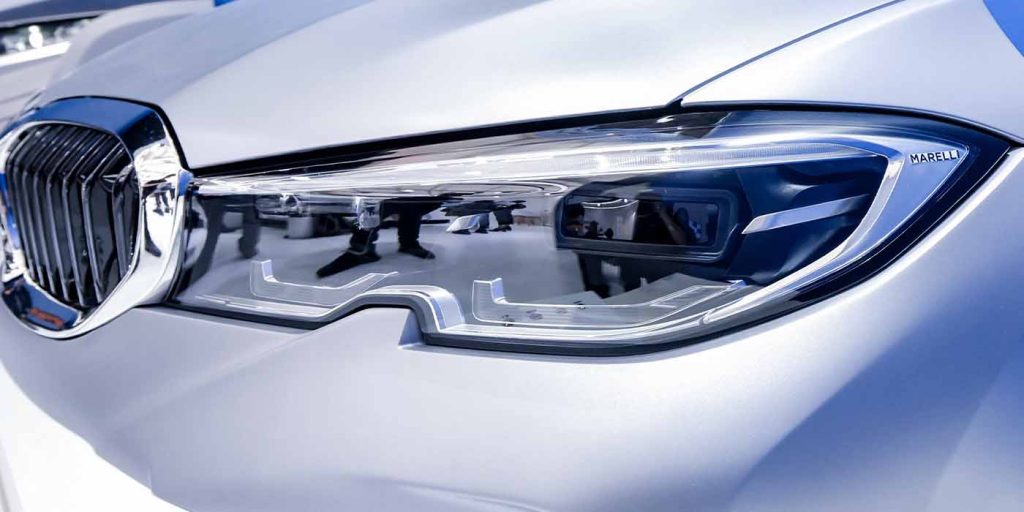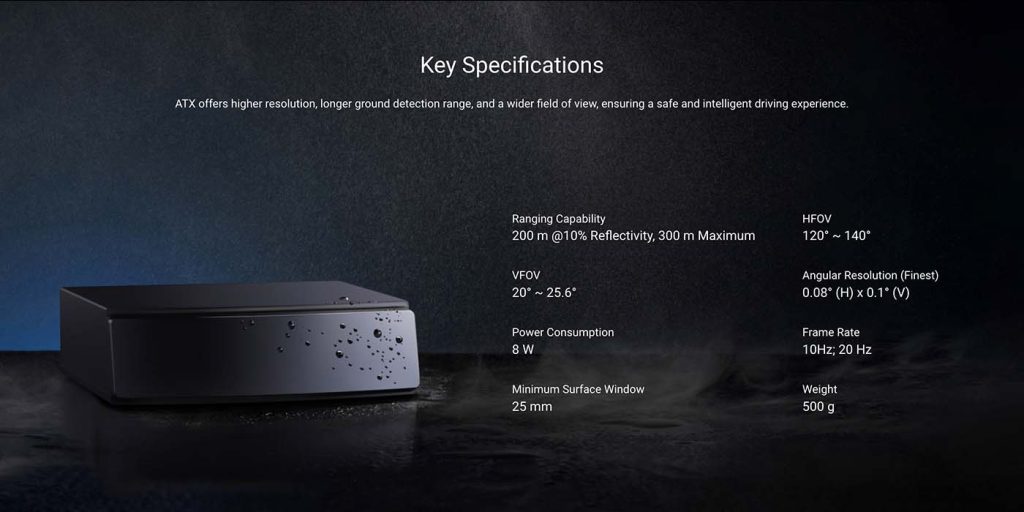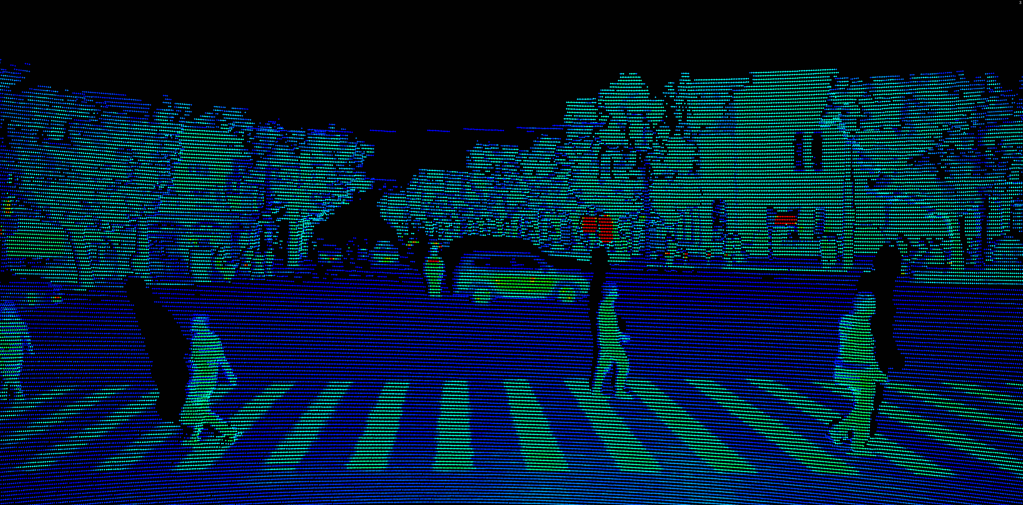
As passenger mobility becomes electric and more technologically advanced, engineers have developed several components to make car travel easier, more efficient, and, most importantly, safer. One of those emerging technologies is LiDAR, which has several benefits for OEMs who integrate it. Hesai Technologies is one of the leading companies helping make that LiDAR-centric transition possible.
Table of contents
Hesai Technology is a global leader in LiDAR solutions
Hesai Technology ($HSAI) is three-dimensional light detection and ranging (LiDAR) specialist with offices all over the globe, including Shanghai, Palo Alto, and Stuttgart.
It currently employs over 1,000 personnel who help research, develop, and manufacture advanced LiDAR technologies for a number of applications, including Advanced Driver Assistance Systems (ADAS) in passenger and commercial vehicles, autonomous driving vehicles, as well as last-mile delivery robots and Automated Guided Vehicles (AGVs).
With over 500 granted patents and another 1000+ pending, Hesai puts a lot of time and effort into its LiDAR research and development, and the result is a growing portfolio of advanced safety sensors that can help pave the way for next-generation vehicles coming to market.
LiDAR remains a viable option for next-gen road safety
As advanced driver assistance systems (ADAS) and autonomous driving applications become more prevalent, the question of whether to use LiDAR sensors, vision cameras, or both is becoming hot topic of debate and an increasingly important one.
Many OEMs have shifted from LiDAR ADAS and self-driving applications to a camera-based vision approach, but environmental factors like lighting and weather conditions can cause confusion.
The automotive and robotics industries are racing against one another to advance from Level 2 autonomous driving (where the driver must keep their eyes on the road and hands on the wheel), to Level 3 and L4 autonomy, where the driver is no longer responsible for driving the vehicle. In these applications, Hesai Technology argues that LiDAR, like its ultra-thin long-range ET25 sensor, can make an effective difference while enhancing safety both on and off the road.
The camera conundrum
Cameras have been integral to the development of autonomous vehicles and ADAS vehicles, providing visual inputs like human eyes, and still exist as a viable option to an extent. They can provide valuable color information and visual cues such as traffic light status and road sign recognition.
Furthermore, opting to integrate only one kind of sensor, i.e., cameras, saves on production costs which can be passed along to consumers.
However, cameras can struggle in challenging conditions. They rely heavily on lighting in a vehicle’s given environment, and their performance can be significantly affected in low light or direct sunlight scenarios, presenting potential safety hazards.
Furthermore, cameras capture two-dimensional images, making depth perception and accurate distance measurement more challenging. These potential limitations underscore the need for more robust perception technology that can provide more information about what’s truly happening in the surrounding environment.
Hesai LiDAR can help enhance safety
LiDAR, such as the AT512 from Hesai, uses laser pulses to scan the environment in three dimensions in real-time. This enables a vehicle’s onboard computer to understand its surroundings, offering a reliable and effective solution to the limitations presented when using camera technology alone.

Hesai Technology’s LiDAR is unaffected by lighting conditions, ensuring consistent performance day and night, and in various weather conditions, including fog and heavy rain, where cameras can sometimes struggle. This independence from external light sources makes LiDAR an effective tool for self-driving vehicles, ADAS, and robots that require reliable and constant navigation capabilities.
Another advantage of LiDAR is its ability to detect objects with high precision and measure their distances accurately. This capability is crucial for vehicles operating on public roads at high speeds, which need to identify hazards, such as pedestrians, other vehicles, and obstacles, from a distance and react accordingly to avoid accidents.
Companies like Hesai have also made significant advances in how LiDAR can be integrated into vehicles, cost, and data security. For example, Hesai’s new ATX LiDAR can be integrated into headlights for a sleeker, subtle design. Moreover, significant advances in LiDAR technology and how it’s manufactured have made it much more affordable, allowing automotive and robotics manufacturers to incorporate the technology without major cost increases for consumers.

Many people don’t know that as hardware, LiDAR is quite secure as it provides data to the vehicle or robot’s central computer for processing without any ability to store or transmit any data wirelessly because it lacks memory, Wi-Fi, Bluetooth, or cellular transmitters.
It also cannot collect biometric data, such as facial scans, because it’s a sensor, not a camera. Furthermore, the 3D maps LiDAR creates of the world around it are not detailed enough for said images.

Tech stacks that maximize safety
Although as a LiDAR technology developer, Hesai would argue it offers superior capabilities in object detection and environmental mapping, the company admits its sensors are most effective when used in conjunction with camera systems.
Camera technology has laid the groundwork for the development of autonomous systems, but LiDAR can help overcome the inherent limitations of cameras and ensure the unparalleled safety that consumers and regulators demand. Combined with vision cameras, Hesai’s LiDAR sensors, like the automotive-grade ultra-high resolution AT128 for instance, can offer vehicles a one-two punch in failsafe ADAS technology.
Hesai explains that the integration of LiDAR technology has already shown promising results in enhancing safety across various applications. In the automotive industry, LiDAR-equipped vehicles have demonstrated improved obstacle detection and collision avoidance capabilities, significantly reducing the risk of accidents. With LiDAR technology rapidly evolving, its integration into new applications is quickly becoming more widespread.
The future of autonomous driving is not just about leading the charge but doing so with the assurance that every possible measure for safety has been employed. As the industry moves forward, Hesai Technology strongly believes the combined use of LiDAR and camera systems will be pivotal in achieving the highest safety standards.
You can learn more about Hesai Technology and all of its LiDAR products here.
FTC: We use income earning auto affiliate links. More.


